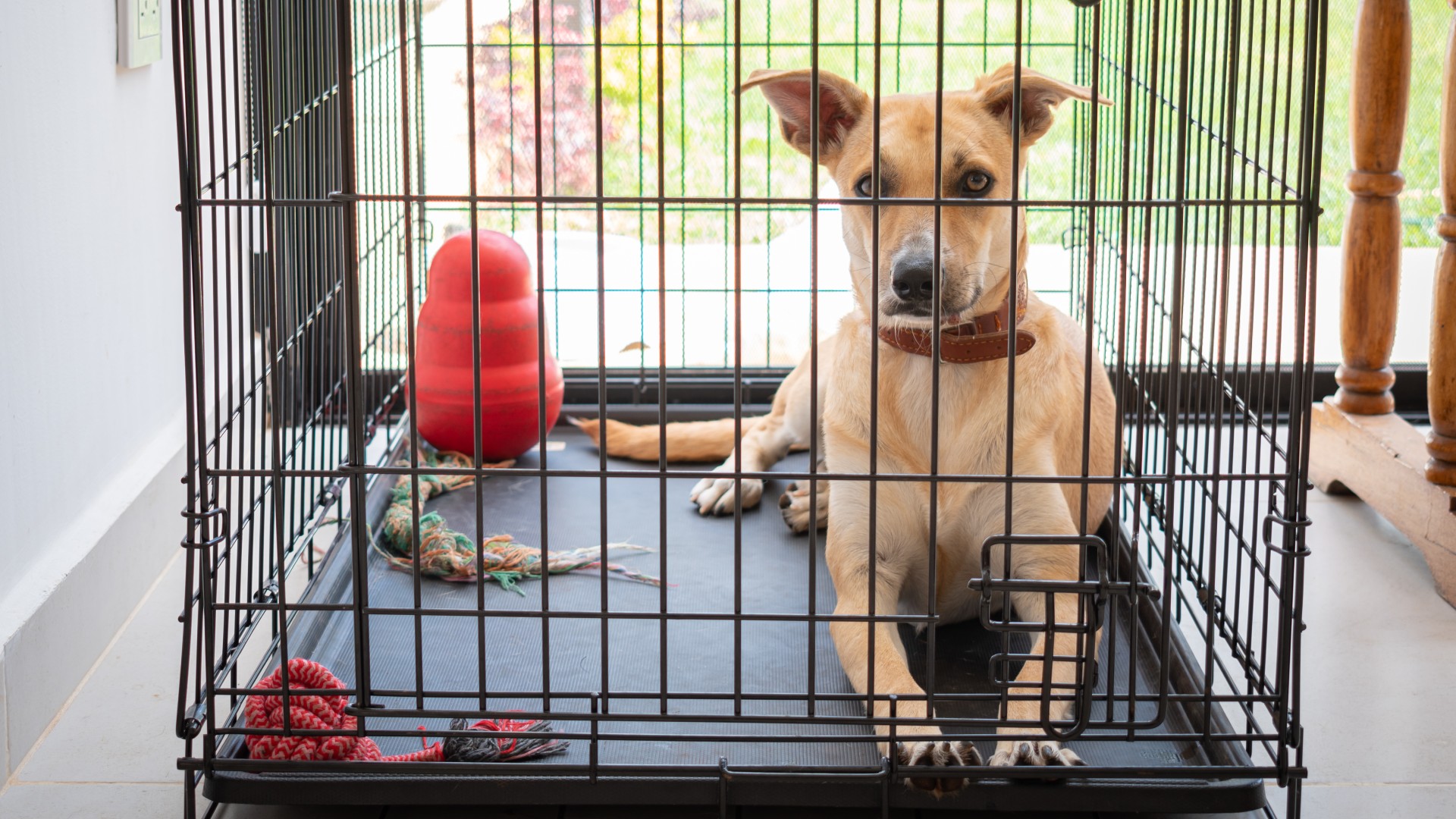Here’s how to create a calm exit for your dog when crate training, according to one trainer
If you decide to go down to route of crate training, this advice will help you

If you’re a dog parent, you’re probably familiar with the concept of crate training – the process of introducing your puppy or an older dog to an indoor crate, with a view to it becoming a safe, familiar space for them.
Crate training won’t always go smoothly, even if your pup has one of the best dog toys in there with them, and there’s the potential for things to go slightly off-track. Perhaps you know how to crate train your dog, but you’re struggling with your pup when they leave the crate.
That’s where Juliana DeWillems, owner and head trainer at JW Dog Training can help. In a recent Instagram post, she’s outlined what you can try to create a calm exit so your canine will be coming out of their crate and doing just fine.
A post shared by JW Dog Training & Behavior Consulting (@jwdogtraining)
A photo posted by on
“There’s no rule that says your dog has to stay still and wait as you open the crate,” explains DeWillems. “But if you’re wanting that skill for safety, this is our favorite way to teach it.”
She explains that it’s a good idea to pair the opening of the door with treats being placed inside the crate. This allows your pup to build the behavior of waiting as the door opens, because they’re anticipating the treats being dropped. Gradually, you can fade the treats out and make your pup’s release from the crate itself the reward once you’re confident that they can reliably wait. And you might decide to try one of these crate games for dogs to make training more fun.
DeWillems adds, “Sure, a dog could learn that leaving the crate early results in the door closing. I’ve taught it this way many times before I learned alternative options. Or, a dog could learn that hanging out in the crate even when the door opens leads to positive outcomes. It’s not always about effectiveness, but rather what is the dog’s experience when accomplishing the goal.”
You can see in the video that the trainer delivers a stream of treats just inside the crate as she opens the door. As a result, the puppy remains lying down in the crate even though the door is open. “What this is doing is building and reinforcing the behavior of staying inside the crate as the door opens instead of bolting out.”
PetsRadar Newsletter
Get the best advice, tips and top tech for your beloved Pets
But crate training is not necessarily for everyone. As DeWillems says, it’s not recommended for every dog and puppy, and where it is recommended, it’s best to introduce it in a positive and low-stress way to build positive associations. She finishes, “We do our best to prioritize agency and freedom of movement!”
Here are five alternatives to crate training that you might find work better for your pup.

Adam is a freelance journalist specialising in pets, music and culture, and mental health and wellbeing. He investigates and writes the large majority of news on PetsRadar, and collaborates with veterinary experts to produce informative pet care content.
Adam has a journalism degree from Southampton Solent University and a masters degree in Magazine Journalism from Cardiff University. He was previously senior editor at dog advice website DogTime.com, and has also written for The Independent, GoodToKnow and Healthline.
He owns two rescue cats, Bunny and Dougie, and has also previously had a rabbit, fish and Roborovski dwarf hamsters.
